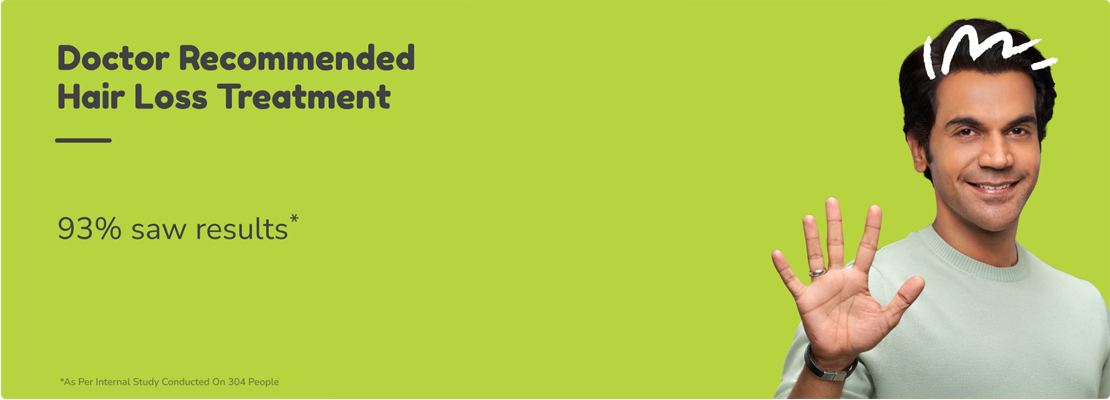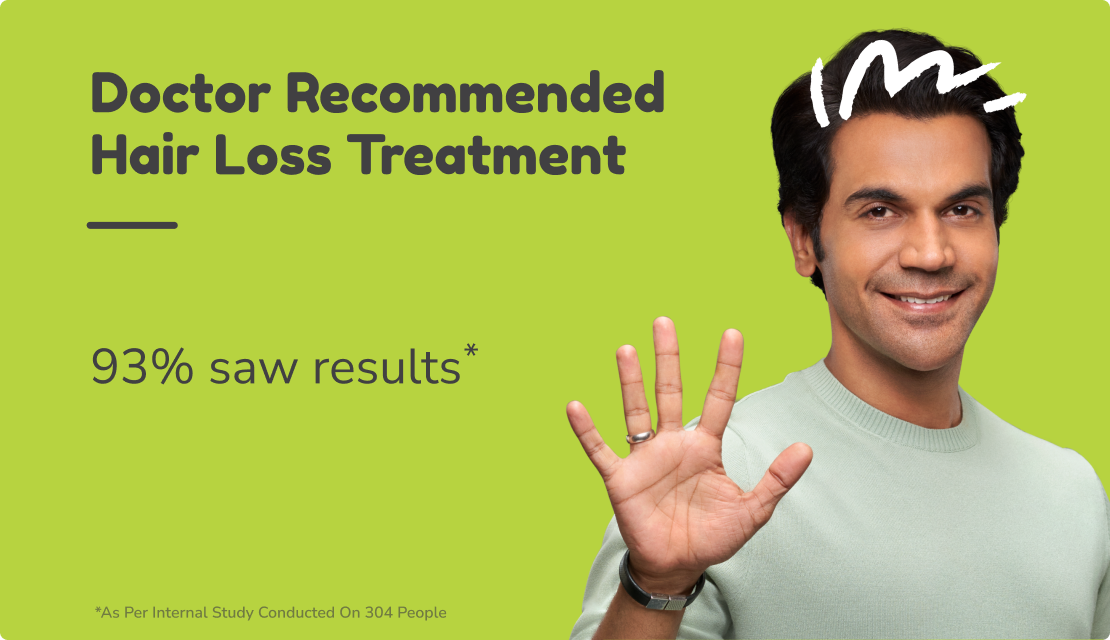Your hair porosity determines how your hair can absorb and retain moisture. Meaning, your hair porosity can affect how well your hair can act with oils and moisturisers that pass in and out of the outermost layers of your hair, which we know as cuticles.
If you know your hair porosity, you can tell if your curls or straight hair, in that matter, is damaged or need more moisture, or if your hair is healthy at all.
To understand hair porosity better, let's know a bit about the structure of your hair. It consists of three layers:
The cuticle is the outer layer of your hair and is made of smaller cuticles that overlap each other.
The cortex is the densest layer of your hair and contains fibres and pigments that colour your hair.
The medulla is a soft central part of the hair shaft.
Different Type of Hair Porosity
Hair porosity is of generally three types:
Low porosity hair
Low porosity hair has cuticles closely held together. Low hair porosity is healthy in reality which opposes the commonly held hair myth. This type of hair is healthy that needs to be adequately moisturised. Meaning, the cuticles are intact but, if not appropriately moisturised, can become dry and damaged.
Medium or Normal porosity hair
In normal porosity hair, the cuticles are less closely tied, and they are the easiest to maintain. Just because the cuticles are tied closely, the moisture penetrates the hair quickly.
High porosity hair
In case of high hair porosity, the cuticles are widely placed. If your hair, especially curls, are experiencing frizz, dryness, and breaks quickly, these may be signs of high porosity hair. In high porosity hair, you can take water in your locks but cannot retain it. It is because the cuticle layer is being damaged from styling or colouring.
Test To Determine Your Hair Porosity
The first step to healthy hair is knowing the condition of your hair. Now that you understand how hair porosity can affect the health of your hair, you might as well want to know the porosity of your hair. You can conduct a simple test at home to know this.
The test
- Shampoo your hair to remove any dirt and product buildup, as these can alter the test results.
- Next, fill a glass with water
- Once your hair is dry, drop one or two strands of your hair into the glass.
- Watch the strands closely to see if they sit at the bottom of the glass or float.
The results
- If the strands float at the top before it sinks, you probably have low porosity hair.
- If you find the strands floating somewhere in the middle of the glass and not setting down, you may have medium or normal porosity hair.
- If your hair strands quickly settle down to the bottom of the glass, you have high porosity hair.
Besides, you can also test your hair porosity by simply running down your finger on a hair strand. Low porosity hair will feel soft to touch, whereas high porosity hair will feel rough as the cuticles are open.
How Does Low Porosity Affect Your Hair?
As discussed earlier low hair porosity is generally healthy, only lacking the desired amount of moisture. This type of hair does not hold moisture well and is water-resistant. This is how low porosity hair can affect your hair:
- Products sit on your hair
You'll find that the hair products don't get absorbed; rather sit on your hair. For example, if you apply any moisturiser or oil on your hair or hair ends, about an hour later, you will find the product still on the hair's surface and not getting absorbed. Even when you touch them with your finger, you may even see them coming off.
- Washing and drying your hair takes time
Because your hair has low porosity and does not quickly absorb, washing and drying your hair might take more time than you'd expect. It becomes difficult for water to penetrate your hair. Even drying your hair might take longer.
Can You Improve Your Hair Porosity?
Yes, you can if the low porosity is caused by product buildup or any styling method. For recovery, you need to stop using styling products and stop using heavy hair products. To begin with, clarifying shampoos works well to remove the product buildup.
However, if your low porosity hair is genetic, there isn't much you can do about it. That said, you can still care for your hair to keep it manageable. Natural conditioners and hair masks are helpful. You can also choose deep conditioning for hair. Look for hair products that have honey or glycerin in them. These ingredients can more easily penetrate your hair cuticles than the products that contain oils.
Tips To Hydrate Hair Properly
Dry hair does not consume or retain enough moisture to keep the hair hydrated and looking nice. It may, over the course, become brittle and fragile. Although dry hair may look unhealthy, here are a few tips for hydrating your hair correctly:
- Using hair care products specific to your hair type
Irrespective of your hair type, it is best to use mild shampoos free of parabens and silicones. Also, it is fine to shampoo your hair once or twice a week. You can use shampoos from Traya, such as hair fall shampoo or anti-dandruff shampoos that are free of paraben and silicones and can help you treat common hair issues.
- Moisturising your hair
If you are wondering how to moisturise dry hair, firstly, stop heat treating your hair. Begin your hair regime with shampoos that are meant for dry hair. Oil your hair regularly with coconut oil, olive oil, jojoba oil or Traya's herbal hair oil. Hot oil massage is an excellent way to moisturise your hair.
- Apply hair mask
Hair masks are a great way to hydrate your hair. You can go with eggs, and mayonnaise-based mixtures as these ingredients help fortify and strengthen your hair, keeping them hydrated. For an effective egg hair mask, you can mix three eggs in a bowl and add two tablespoons of olive oil with one tablespoon of honey. Apply this mixture to your dry hair and leave for thirty minutes. Rinse and wash with a mild shampoo.
- Healthy diet
Eating healthy is good for your hair. Eat food that is rich in protein and Omega-3s for healthy and shinier hair. Consider adding fatty fish, tomatoes, broccoli, kidney beans, walnuts, blueberries etc., to your diet. You may also add hair vitamins or metabolism tablets that are good for your hair. Combine these supplements with a good diet for beautiful hair.
Traya is not just a hair care brand. It is a one-stop destination for all your hair problems. To know your hair porosity and your overall hair health, get a hair diagnosis today. You can also talk to a hair expert or check the natural hair care products here.
FAQs
- How do you know your hair porosity?
To know your hair porosity, you can take a test. Wash your hair to remove any product buildup or dirt from your hair. Once your hair is dry, drop a few strands of your hair in a glass of water. If your hair strand floats before sinking, your hair porosity is low. If your strands float somewhere in the middle of the glass, you have medium porosity hair. And if the strands sink to the bottom of the glass, it is more likely your hair porosity is high.
- Is low porosity hair bad?
No, low porosity hair is not bad. They are healthy and lack moisture. The cuticles of this hair are loosely packed that lays flat, and resists moisture. As compared to high porosity hair, this hair type is healthy and needs some care.
- What are signs of low porosity hair?
Signs of low porosity hair include hair being too oily or too dry, more dandruff, that takes a lot of time to wash.
- Does high porosity hair dry fast?
High porosity hair soaks in water and can take forever to dry. It can take hours or sometimes a day to dry naturally.



